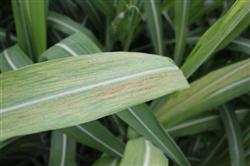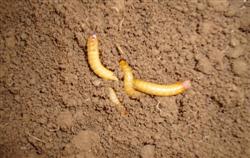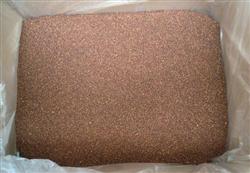How to control black-skinned sugarcane mosaic virus?

What harm does black-skinned sugarcane mosaic disease have? How to control black-skinned sugarcane mosaic virus? Please also know the netizens to help introduce the farming network to sort out the harm and control methods of black-skinned sugarcane mosaic virus, which are listed in detail below for netizens' reference. Harm of black-skinned sugarcane mosaic virus: black-skinned sugarcane mosaic virus occurs early, the trend is fierce, and the damage is serious. Many black-skinned sugarcane seedlings have yellowing leaves, new roots atrophy, gradually die, do not grow new leaves, and develop slowly. if it is not controlled in time, it will spread rapidly, aggravate the damage, make the stem node thin and long, the sugarcane skin becomes flower, and finally form "peel sugarcane". Loss of edible value and commodity value. Therefore, we should pay close attention to the prevention and control of mosaic virus disease in order to protect black-skinned sugarcane seedlings. Prevention and control of black-skinned sugarcane mosaic virus: method 1. Spray the mixture of 1500 times plant virus vaccine, 1500 times natural brassin and 4000 times golden crown (30% difenoconazole propiconazole) on the leaves of black-skinned sugarcane. Spray once every 10 to 15 days, evenly wet all leaves, in order to start dripping down. Method 2. Apply the mixture of zinc sulfate, endosulfan, magnesium sulfate and potassium nitrate to the root of black-skinned sugarcane for 3 times, every 10 to 15 days, with 2kg per hole. According to the above methods, the virus activity in black-skinned sugarcane seedlings can be inhibited and weakened, the virus can be killed, the aphids and thrips that spread viral diseases can be eliminated, the disease of black-skinned sugarcane seedlings can be controlled, and the diseased plants can return to normal growth. the yellowed leaves turn to dark green, the stems and leaves are thick, the roots are developed, the plants are vigorous, and the plants enter the jointing and extension stage smoothly. Click for more sugarcane planting techniques click to get more fruit planting techniques
- Prev

What are the sugarcane pests?
What are the sugarcane pests? How to effectively prevent and cure it? Also ask the netizens who know to help introduce the main pests of sugarcane during the whole growth period, including root pests, foliar pests and stem pests. The farming network has sorted out the control methods of these three kinds of pests, which are listed below for netizens' reference. Sugarcane root damage.
- Next

How to cultivate kiwifruit seedlings?
How to cultivate kiwifruit seedlings? What should I pay attention to? Netizens are also asked to help guide the planting network to sort out kiwifruit seed breeding method, cutting seedling method and root cutting seedling method, which are listed below for netizens' reference. The seed raising method and management method of kiwifruit seedlings 1. Kiwifruit seed collection.
Related
- Moge, come on! The staff of the peasant association in the producing area of cantaloupe were frightened when the crowd gathered.
- Causes and Solutions of low Fruit setting rate of Apple
- Symptoms and control measures of passion fruit virus disease
- Fruit growing lesson: how do apple orchards keep high yields?
- Can you build orchards in the mountains? What are the pros and cons?
- How to manage the coloring period of Crisson grape?
- This paper introduces the processing technology of two kinds of fig products.
- How much is a month for retired teachers in rural areas by 2020?
- How can strawberry planting increase sugar content? We should pay attention to management in many aspects.
- What are the cultivation techniques on how to improve the yield of golden fruit?

